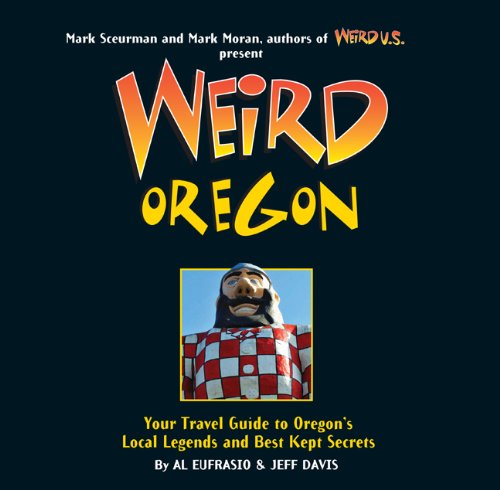
The Pacific Northwest teems with colorful history and unique legends—and this tour of the Beaver State is no exception! Check out the gas station restroom that looks like cowboy boots as you search the skies for a man flying across the state in a lawn chair tethered to helium balloons. And how about visiting that “city” in eastern Oregon with a year-round population of zero to two, depending on whether anyone gets trapped in the snow? Can it get any weirder than this!

When you open Strange 66, take a look beyond the all-American sheen to the seedy, creepy, and just plain weird stories behind America’s Mother Road.
Route 66 conjures images of an innocent golden age of car travel: shiny V8s powering down hot, two-lane blacktop, sucking 20-cent-a-gallon gasoline, and periodically depositing their occupants at mom-n-pop greasy spoons, neon-lit motels, and tourist traps. But America’s Mother Road wasn’t all about ruddy-cheeked, summer vacationers. Route 66 and the regions it traverses have a side more seldom seen, rich with weird tales (mimetic architecture, paranormal phenomena, and even cryptozoology) to the downright sordid and seedy (murder, mistreatment, and other assorted mayhem).
In Strange 66, bestselling Route 66 authority Michael Witzel explores the flip side of Route 66 to offer details on infamous Route 66 locations that once served as hideouts for the James Gang (Meramec Caverns), Bonnie and Clyde (Baxter Springs, Kansas), and Al Capone (Cicero, Illinois).
There are the stories of unspeakable crimes committed along 66, such as the Stafflebeck “murder bordello” in Galena, Kansas, and Ariziona’s “Orphan Maker of Route 66.” Witzel also explores the people that passed through the region, including the Dust Bowl exodus and the Trail of Tears tribute in Jerome, Missouri.
Then there are the lighter, though still strange stories, such as the Route 66 Great Transcontinental Footrace and the origins of various roadside colossi, like the Blue Whale of Catoosa and Giganticus Headicus in Walapai, Arizona. And speaking of heads, what about steak? Eat one as big as your head at the Big Texan in Amarillo—and it’s free!
All of these stories culminate in a look at Route 66 unlike any other, completely illustrated with modern and archival photography and written by an acknowledged authority on the Mother Road.
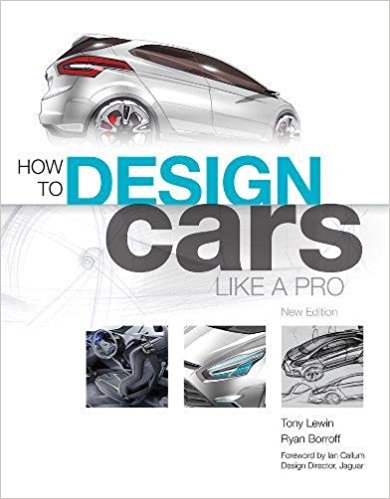
This comprehensive new edition of How to Design Cars Like a Pro provides an in-depth look at modern automotive design. Interviews with leading automobile designers from Ford, BMW, GM Jaguar, Nissan and others, analyses of past and present trends, studies of individual models and concepts, and much more combine to reveal the fascinating mix of art and science that goes into creating automobiles. This book is a must-have for professional designers, as well as for automotive enthusiasts.
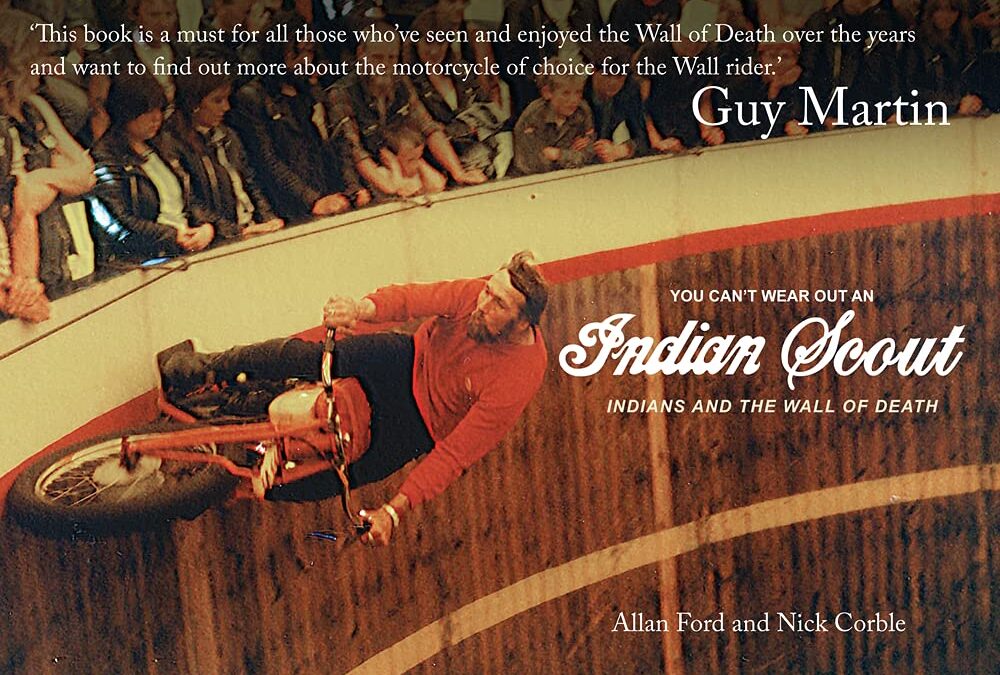
The Indian Scout motorcycle is the favoured mount for Wall of Death riders all over the world. Drawing upon modern and archive material, Wall of Death owner and rider Allan Ford and author Nick Corble explore the reasons behind this relationship and bring the story of the Wall up to date, including behind the scene details of the latest Wall of Death speed record achieved by Guy Martin. It’s a story that spans more than a century, starting with experiments with motorised bicycles in the 1890s, passing through two world wars and ending by looking to a future where Indians continue to be restored and ridden on the Wall. As this book makes clear, the relationship between Indians and the Wall of Death is one that will never be broken. As Sammy Pierce, at one time the world’s largest Indian motorcycle dealer once put it:You can’t wear out an Indian Scout,Or its brother the Indian Chief.They’re built like rocks to stand hard knocks,It’s the Harleys that cause the grief.
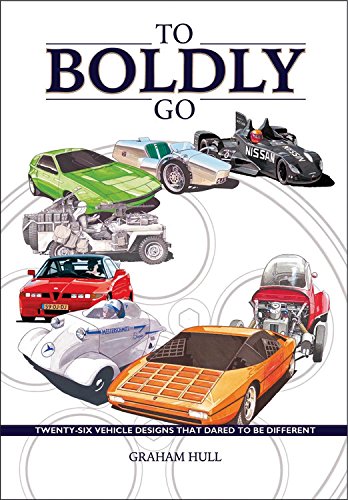
A century of 26 exceptional designs. Author Graham Hull, designer of Rolls-Royce and Bentley cars for 30 years, believes vehicles associated with extreme niches, luxury, performance or economy are fascinating. Regardless of being built in millions or not, one litmus test is applied: was the vehicle an exceptional solution? The fruits of Formula 1 ‘laboratories’ and backstreet lock-ups alike face similar scrutiny – Lamborghini or 2CV being equally relevant.
The 1911 Morgan three-wheeler, still in production 100 years on, proves the potency of an original concept. Whether for austerity, off-road, competition or social status, this book follows vehicle rationales where the backdrop is the power of creativity – individuals and teams rattling the cage of convention and winning their place in automotive history. Whether the Tyrrell’s four-wheel bogie, or the Bond’s mechanical ‘pony,’ such cars bear witness to ingenuity, and the world would be a poorer place without the striving of their creators.
The author’s commitment to original artwork captures the vehicles aesthetically, often technically and also in action. Each chapter gives a sense of the commercial and social background, and of the design’s use, and the author’s, and others, personal testimonies support this fascinating journey through some fascinating car designs.
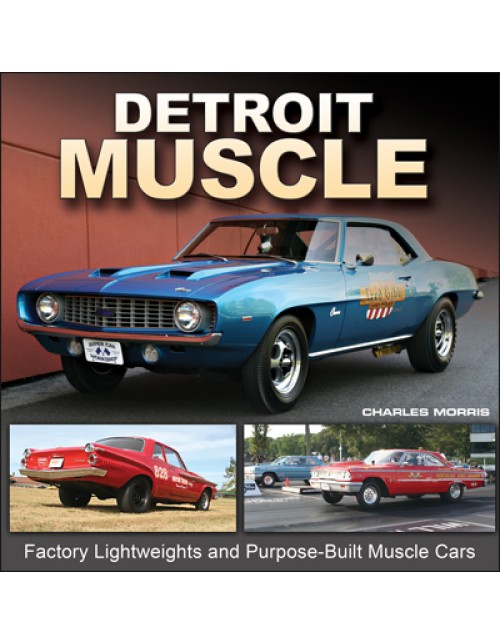
The muscle car era, and the era that immediately preceded it, are a unique window in time; it is one that we will not likely see again. Post-war USA was a place where people wanted to move on from the horrors of conflict, to embrace an era of peace, and to pursue, well, all sorts of things. A whole generation was entering a new prosperity, with home ownership on the rise, gainful employment increasing, the building of suburbs, and a new interstate system connecting everyone. That all helped increase our dependence upon, and in turn, deepen our love affair with the automobile.
It started in the 1950s, when automakers realized that if they made their cars more powerful than brand X and won races on the weekends as well, sales would follow those victories into the dealership. Not everybody was enamored with all this new-found performance, however, and throughout the late 1950s and early 1960s, a struggle developed between building faster automobiles and appearing responsible and promoting the cause of safety. This led to racing participation on an all-out corporate level, followed by voluntary self-imposed and publicized bans, back-door cheating on said bans, and then investing in performance again.
A byproduct of all this activity was some really fascinating and exciting cars. It began with standard-chassis cars growing bigger and including more powerful engines. Then they graduated to being lighter, putting big engines into mid-size chassis (muscle cars), and building race cars that barely resembled anything on the street. Detroit Muscle: Factory Lightweights and Purpose-Built Muscle Cars follows the evolution of the fastest, most powerful, and exciting vehicles of the era, in both drag racing and NASCAR. From early Hudson Hornets, to the birth of the Hemi, to aluminum and fiberglass panel sedans, to lightweight special-order muscle cars ready to race from the factory.

From the Jupiter’s inception and development, to it’s sporting success, and it’s current status as a sought-after classic, this unique book from the world authority on the Jupiter is a complete study of the model. Designed by Dr Eberan-Eberhorst, the noted Austrian engineer who designed the Auto Union Type D Grand Prix car, the Jowett Jupiter was an instant hit. With it’s responsive handling and lively engine, the Jupiter had great sporting success from the off, with a record-breaking win at the Le Mans 24 Hours in 1950, and a class 1-2 win at 1951’s Monte Carlo International Rally.
This book covers the Jupiter’s success across the board, revealing the full chronology of the model, it’s racing derivates, and the special-bodied Jupiters from the likes of Stabilimenti Farina and Abbott of Farnham. With chapters detailing Jupiters in current use, historic racing, and concours events, this book is a unique and comprehensive record of this fantastic, historic car.

The fascinating story of a century-old automobile dynastyFiat is one of the world’s largest automakers, but when it made headlines by grabbing control of a bankrupt Chrysler in 2009 it was unknown in the U.S. Fiat’s against-all-odds swoop on Chrysler—masterminded by Sergio Marchionne, the Houdini-like manager who saved Fiat from its own near-collapse in 2005 – has made the automaker one of the most unlikely winners of the financial crisis.
Mondo Agnelli is a new book that looks at the chain of unpredictable events triggered by the death of Gianni Agnelli in 2003. Gianni, the charismatic, silver-haired power broker and style icon, was the patriarch who had lead the company founded by his grandfather in 1899. But Gianni’s own son had committed suicide. Without a mature heir, the dynasty and Fiat were rudderless. Backed by Gianni’s closest advisors, his serious, shy, and determined grandson John plucked Marchionne from obscurity. Together, they saved the family company and, inadvertently, positioned Fiat as a global trailblazer when the global storm hit.
- A classic story of ingenuity and hard work, the book portrays a business dynasty that triumphed over adversity and family tragedy because of its own smarts, sweat, and ability to bend the rules
- A an engaging tale for those interested in the stories behind the economic crash, the book contains never-before reported material about how Fiat succeeded in making Chrysler profitable where both Daimler AG and Cerberus, its previous owners, had failed.
A story for a wide audience, from car buffs, business readers, lovers of Italy, and anyone fascinated by the lifestyle of Europe’s most glamorous industrial dynasty, this book tells the tale of how Fiat achieved the seemingly impossible — turning around an American automotive icon everyone else had given up for dead.
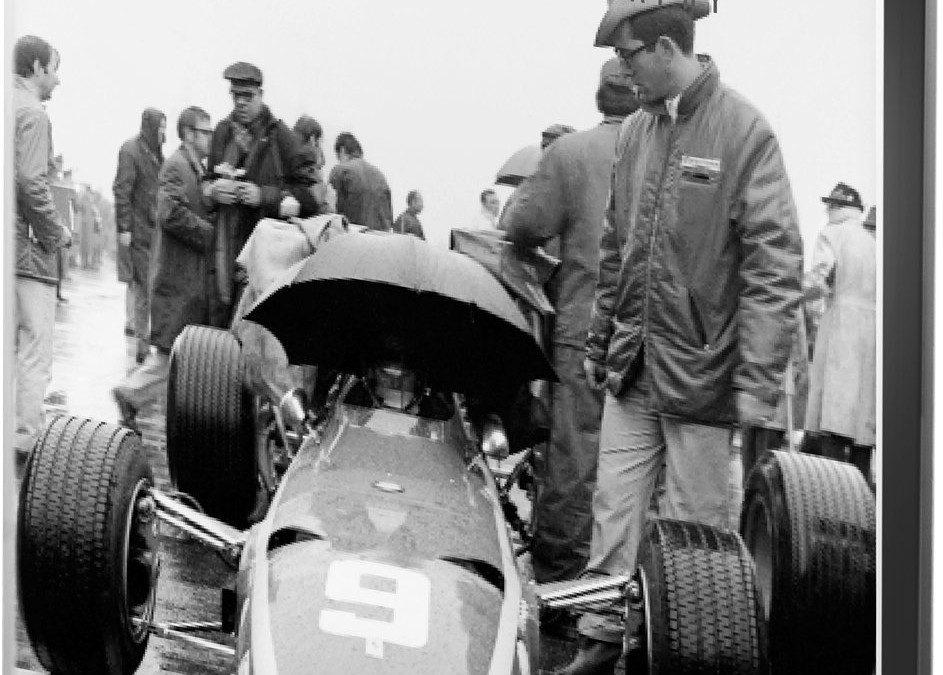
MOTOR RACING PHOTOGRAPHY is a tribute to the early years of Formula 1 and international sports car racing. It was a time when race drivers became overnight superstars and Triumph and Tragedy were often only a few laps apart. The opulent picture book tells of drivers with charisma and unimaginable courage, constantly living and driving at the limit to be part of the big show, often paying with their lives. Werner Eisele’s photographs capture like no other the fascination of this particular racing epoch. Darting cars, historic tracks and great champions: Over 200 stunning pictures and numerous personal memories of the legendary automotive photographer in the golden hours of motorsport are here for the reader to share. With a foreword by the two-time Formula 1 World Champion and six-time Le Mans winner Jacky Ickx this is a must read for all racing fans!
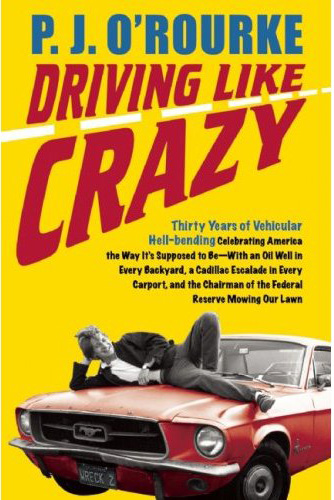
“Driving Like Crazy” chronicles P. J. O’Rourke’s thirty-year-long love affair with cars – combining his classic pieces with new, previously unpublished work, it is an inimitably humorous and pleasurable celebration of cars, speed, and the open road. P. J. O’Rourke, ‘the funniest writer in America’, harbors a guilty pleasure – ever since growing up the son of a car dealer in Ohio, he has been crazy about cars. In “Driving Like Crazy”, he revels in his love for all things vehicular. From a thousand-mile expedition across Mexico, to a trek through Kyrgyzstan in the back of a Soviet army surplus truck; from an alcohol-fuelled weekend in North Carolina, to an eventful journey from Islamabad to Calcutta; and, from Buicks to Land Rovers to Harley-Davidson’s, P. J O’Rourke gets behind the wheel to take us on a hell-bending tour of some of the worlds most scenic – and most treacherous – roads. Along the way he muses on everything from the peculiar joys of NASCAR, to what type of car handles best, to the mind-boggling misdemeanors it is possible to perform in the front (and back) seat. Spanning over thirty years, and combining O’Rourke’s classic journalism with original, previously unpublished pieces, this is P. J. at his Gonzo best: a must-read for his many fans, and for anyone who shares his hopelessly passionate devotion to the car. Fasten your seatbelts; you’re in for a bumpy ride.
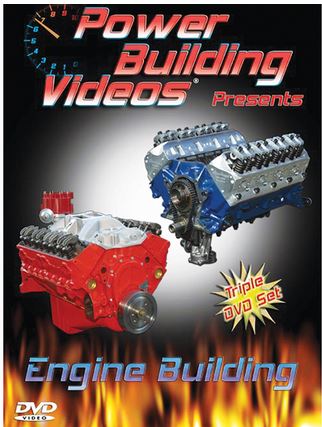
ENGINE BUILDING is THE most detailed DVD ever produced on how to build pretty much any engine, from bone stock to mild performance.
This DVD has 5 hours of information showing you every little detail and trick on how to build your own engine. It starts with the basics that so many other’s skip over. You’ll see a complete side by side build of a bone stock 350 Chevy and a mild performance 351W Ford with after market rods, pistons, aluminum heads, roller valve train, etc. All of the nitty gritty details of BOTH engines are covered. Once you see how two engines like these go together, you’ll know how pretty much ANY engine goes together! You’ll see all of the differences (and all of the similarities) from the machining process, to the parts chosen, to the clearances, to the final assembly.
If you’ve wanted to learn how to build your own engine, whether it’s a Ford, a Chevy, Buick, Olds, Mopar, a small block or a big block, then this is the DVD for you! Gain the knowledge and you’ll gain the power.
KNOWLEDGE IS HORSEPOWER! |

Although primitive unmanned TV-guided airplanes were used in combat during World War II, it is only recently that these machines have matured into the most significant new method of aerial combat since the beginning of contemporary warfare. The fact that onboard human pilots are no longer needed for these aircraft to carry out their deadly missions is fascinating for military enthusiasts and aviation historians alike. These remotely piloted vehicles are now re-writing the book on modern aerial surveillance and close air support. Delivering their lethal payloads with surgical precision, propeller-driven and jet-powered remotely piloted aircraft are guided by satellite, and flown by human operators located halfway around the world in air-conditioned trailers, isolated from the hostile combat environment of the aircraft themselves. While this book also covers the history and development of early-unmanned aerial vehicles, the focus is on all the latest impressive technology used in today’s most modern remotely piloted combat aircraft.
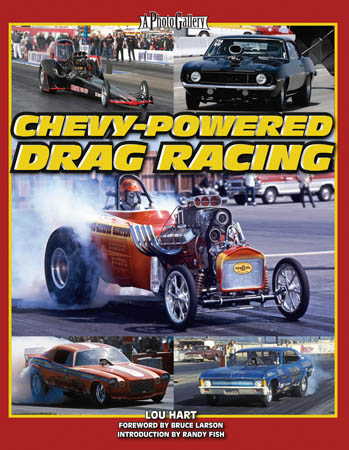
For more than half a century, Chevrolet has served notice at the quarter-mile with record-setting performances from nitro-fed Top Fuel Dragsters and Funny Cars to heavy-metal door slammers.
The list of Chevrolet’s quarter-mile legends include the likes of Bill ”Grumpy” Jenkins, Dick Harrell, ”Dyno” Don Nicholson, Jim Bucher, ”Jungle” Jim Liberman, John Peter’s ”Freight Train,” Clare Sanders, Warren Gunter, Dave Stickler, and Wally Booth. You will find all of these and more featured here in exciting action photos!
With more than 1200 NHRA championships, Manufacturer Championships and Top Eliminator Titles, Chevrolet engines and cars continue to be a strong force in drag racing.

Wartime letters of a New Englander’s journey from innocence to elite fighter squadron pilot “A must-read for young Navy and Marine Corps officers as they enter aviation training.”—Lt. Gen. Robert F. Milligan, U.S. Marine Corps (retired) “An intriguing look at Marine aviation in World War II by a sensitive and intelligent pilot; few narratives provide as much insight into the intensely personal feelings of a pilot in combat.”—Walter Boyne, author of The Influence of Air Power upon History “Offers a compelling look into the world of a young man who left the comfort of civilian life to become a pilot in one of the best known combat fighter squadrons of the Pacific War. Lt. Carl O. Dunbar Jr.’s letters home remind us of the personal side of the Second World War.”—Michael H. Creswell, author of A Question of Balance Before the Marine Fighting Squadron VMF-214 became known as the Black Sheep squadron led by “Pappy” Boyington, this air group was already flying missions from Guadalcanal. Commissioned in 1942, the squadron was originally known as “The Swashbucklers.”
Lt. Carl Dunbar was one of the squadron’s original pilots, and his letters home describe the training and living conditions he faced as a Marine in the Pacific theater during the early years of World War II. Dunbar ultimately flew eighty-two missions during the Solomon campaign, and this volume includes his private logbook.
Like many veterans, after returning to the United States Dunbar rarely spoke about his wartime service. Only after his death did his son Peter discover this trove of material, and his commentary provides context for each of his father’s letters. Both personal and universal, this volume offers a glimpse of what life was like for a man with a great sense of loyalty and compassion caught up in the war of his generation. Peter M. Dunbar is a lawyer and partner with the Tallahassee-based firm of Pennington, Moore, Wilkinson, Bell and Dunbar and serves as an adjunct professor of law at Florida State University.

New York City custom car and motorcycle culture has long been overshadowed by the left coast designers and machines. In this unprecedented book, urban anthropologist Michael McCabe presents the stories, innovators, and machines behind NYC car and motorcycle builders. He reveals an outsider’s tale filled with passion, creativity, and high-speed thrills. Based on a year’s worth of interviews and photo shoots with nearly 40 custom builders, McCabe offers unique access to their private, creative lives and impressive collections of machines in garages and workshops throughout the five boroughs. Legendary urban personalities like “Big Daddy” George LeBlanc, Mel Bernstein, and Dick Zigun tell the history of NYC horsepower, including nostalgia for the days of the NASCAR-sanctioned Weissglass Speedway on Staten Island, illegal street racing, car clubs, and shows. Voices from the groundswell of younger builders, like John Copeland, Sal Pepi, and Pete Ranko, complete this collection of oral histories and images and show respect for the city’s hands-on narrative. With nearly 800 images of custom cars and motorcycle, this history is ideal for builders, car collectors, and urban historians.

Without a doubt, GM’s LS Series engines are the hottest thing going right now. Thousands of enthusiasts are either modifying their cars factory equipped with these engines, supported by a robust aftermarket, or converting their vintage muscle cars to run with these efficient and powerful engines. Of course, with technology comes complexity. To get the maximum performance and efficiency out of any modern engine, you have to have a solid understanding of the technology involved and how to make the most of it.
In How to Use and Upgrade to GM Gen III LS-Series Powertrain Control Systems, the benefits, advantages and nuances of this robust and efficient control system are thoroughly examined. Do you have a vehicle already equipped with an LS Series engine but want to do a transmission swap? Do you want to convert from a cable throttle to an electronic throttle, and make systems like cruise control integrate? Do you want to eliminate the dreaded Optispark distributor from your LT1/LT4? Perhaps convert your Gen I small-block to distributor-less ignition? Or convert to universal OBD-II diagnostics? Do you want an affordable control system to run fuel injection, ignition timing, cooling fans, air conditioning, and electronic overdrive transmissions while swapping all if this into your classic muscle car?
How to Use and Upgrade to GM Gen III LS-Series Powertrain Control Systems will cover all of these applications and more. Not only are the performance and flexibility aspects covered in great detail, but there are significant cost benefits as well. Implementing a GM Series III PCM based control system will not only afford you great flexibility and tune-ability, but it can be accomplished significantly cheaper than most aftermarket alternatives. If you are planning any of these complex swaps or just looking to thoroughly understand the nuances of modern GM control systems, this book is a vital addition to your technical library.
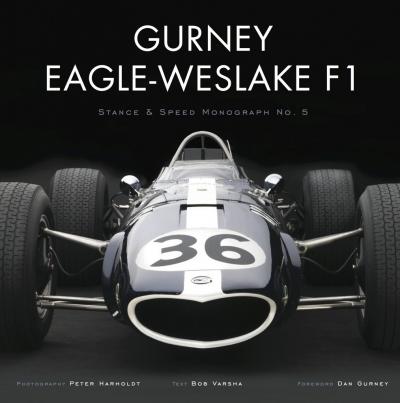
“In 1967 Dan Gurney gained a permanent place among America’s greatest racing heroes. Driving his Gurney-Weslake Eagle, he won the Belgian Grand Prix and became the only American to win a modern-era European Grand Prix race in an American car. In doing so he defeated such legends as Jim Clark, Graham Hill, Jack Brabham, and Jackie Stewart, more established teams like Ferrari and Lotus, and conquered the menacing Spa-Francorchamps circuit itself, much of which was made up of dangerous and narrow public roads that the racers traversed at speeds approaching 200 mph.
This exciting new addition to the Stance & Speed Monograph series is written by broadcasting veteran Bob Varsha, known to American racing fans as the voice of Formula One races on Speed TV for more than a decade. As always, the photography of Peter Harholdt enhances the classic beauty of the car, while Gurney himself adds a foreword in which he reflects on this remarkable car and his legendary accomplishment.
”
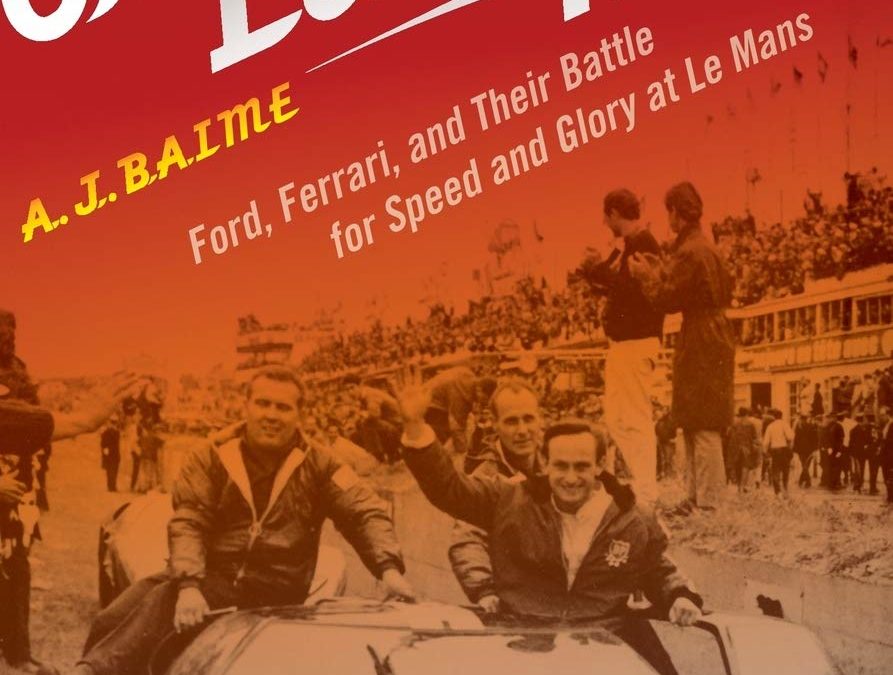
“By the early 1960s, Ford Motor Company, built to bring automobile transportation to the masses, was falling behind. Baby boomers were taking to the roads in droves, looking for speed not safety, style not comfort, and Ford didn’t offer what these young drivers wanted. Meanwhile, Enzo Ferrari lorded over the European racing scene, crafting beautiful, fast sports cars that epitomized style.
Baime tells the remarkable story of how Henry Ford II, with the help of a young visionary named Lee Iacocca and a former racing champion turned engineer named Carroll Shelby, concocted a scheme to reinvent the Ford company. They would enter the high-stakes world of European car racing, where an adventurous few threw safety and sanity to the wind. They would design, build, and race a car that could beat Ferrari at his own game, at the most prestigious and dangerous race in the world, the 24 Hours of LeMans.
Go Like Hell transports readers to a golden era in racing when Ford’s innovative strategy led to victories on the track and renewed respect for the American automobile.
“

There is no better way to learn physics than by having a problem to solve.
As a gearhead, you have a secret advantage when it comes to understanding physics: you see it at work every time you solve a problem with your car or watch a motorsports event. The experience you already have tuning cars or motorcycles is your virtual physics lab. Physics for Gearheads will show you that if you can learn about cars, you can learn about physics.
Whether your interest is in increasing your engine’s horsepower, getting more miles per gallon, or shaving tenths off your lap time on track day, you can use physics to gain insight into the problem and formulate a solution. Physics for Gearheads not only explains physics principles in language you can understand, it demonstrates how to use physics to your advantage.
Note on the units of measurement used in Physics for Gearheads: This book outfits the reader to work in SI or British Engineering units.
Chapters
1. A Warm-Up Lap
2. Kinematics Basics
3. Kinematics Applications
4. Dynamics Basics
5. Forces
6. Dynamics Applications
7. Torque, Force Resolution, and 2-D Vectors
8. Angular Dynamics Basics
9. Angular Dynamics Applications
10. Dynamics in a Plane Basics
11. Dynamics in a Plane Applications
12. Energy Basics
13. Energy Applications
14. Power Basics
15. Power Applications
16. Statics and Quasi-Statics Basics
17. Statics and Quasi-Statics Applications
Randy Beikmann is an automotive engineer working at the top of the industry. And he loves physics. Through his masterful teaching, physics doesn’t look foreign – it looks like common sense.
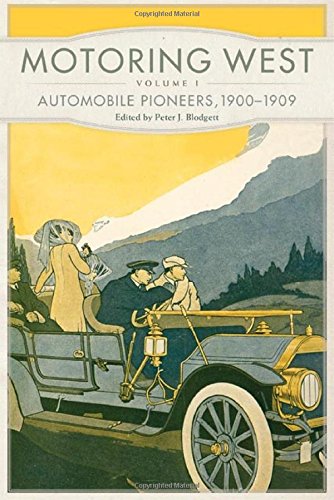
In the first years of the twentieth century, motoring across the vast expanses west of the Mississippi was at the very least an adventure and at most an audacious stunt. As more motorists ventured forth, such travel became a curiosity and, within a few decades, commonplace. For aspiring western travelers, automobiles formed an integral part of their search for new experiences and destinations—and like explorers and thrill seekers from earlier ages, these adventurers kept records of their experiences. The scores of articles, pamphlets, and books they published, collected for the first time in Motoring West, create a vibrant picture of the American West in the age of automotive ascendancy, as viewed from behind the wheel.
Documenting the very beginning of Americans’ love affair with the automobile, the pieces in this volume—the first of a planned multivolume series—offer a panorama of motoring travelers’ visions of the burgeoning West in the first decade of the twentieth century. Historian Peter J. Blodgett’s sources range from forgotten archives to company brochures to magazines such as Harper’s Monthly, Sunset, and Outing. Under headlines touting adventures in “touring,” “land cruising,” and “camping out with an automobile,” voices from motoring’s early days instruct, inform, and entertain. They chart routes through “wild landscapes,” explain the finer points of driving coast to coast in a Franklin, and occasionally prescribe “touring outfits.” Blodgett’s engaging introductions to the volume and each piece couch the writers’ commentaries within their time.
As reports of the region’s challenges and pleasures stirred interest and spurred travel, the burgeoning flow of traffic would eventually and forever alter the western landscape and the westering motorist’s experience. The dispatches in Motoring West illustrate not only how the automobile opened the American West before 1909 to more and more travelers, but also how the West began to change with their arrival.






















